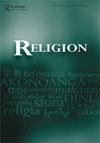Mighty Baal: Essays in Honor of Mark S. Smith
IF 0.9
2区 哲学
0 RELIGION
引用次数: 0
Abstract
giously observant region of the country. Obviously, migration to the capital from outside the UK has been an important factor in this development, but other explanations are also significant, including the tendency of the metropolis to attract gifted and energetic religious leaders. Field’s evidence further indicates the need to recognize geographical diversity and specificity within the overall trend that he documents. For example, in 1881 the index of attendance – that is the total attendance at church services expressed as a percentage of population – ranged from 91.3 in Dysart (Fife) to 16.5 in Widnes (then Lancashire). These were the extreme figures, but Field’s tables show extensive variation within the 20 to 80 range, suggesting that the periodization of secularization looks significantly different in different communities. Moreover, such variation cannot be explained by simplistic generalizations about the size of towns or broad regional differences. A full understanding is likely to require close attention to the specifics of local economy and geography alongside human and spiritual factors, such as the positive or negative impact of particular religious leaders. Hence, despite Field’s herculean efforts, there remains much to be done. This book, however, is an important landmark in the study of secularization in Britain, bringing evidential rigour and balanced nuanced analysis to a scholarly inquiry in which such essential qualities have sometimes been lacking.强大的巴尔:纪念马克·S·史密斯的随笔
该国戒备森严的地区。显然,从英国境外移民到首都是这一发展的一个重要因素,但其他解释也很重要,包括大都市吸引天才和精力充沛的宗教领袖的趋势。菲尔德的证据进一步表明,需要在他所记录的总体趋势中认识到地理多样性和特殊性。例如,1881年,出席率指数——即以人口百分比表示的教堂服务的总出席率——从戴萨特(法夫)的91.3到威内斯(当时的兰开夏郡)的16.5不等。这些都是极端的数字,但菲尔德的表格显示,在20至80岁的范围内存在巨大差异,这表明不同社区的世俗化时期看起来有很大不同。此外,这种差异不能用对城镇规模的简单概括或广泛的地区差异来解释。充分理解可能需要密切关注当地经济和地理的具体情况,以及人类和精神因素,例如特定宗教领袖的积极或消极影响。因此,尽管菲尔德付出了巨大的努力,但仍有许多工作要做。然而,这本书是英国世俗化研究的一个重要里程碑,它为一项有时缺乏这些基本品质的学术研究带来了证据的严谨性和平衡的细致入微的分析。
本文章由计算机程序翻译,如有差异,请以英文原文为准。
求助全文
约1分钟内获得全文
求助全文
来源期刊

RELIGION
RELIGION-
CiteScore
2.70
自引率
0.00%
发文量
58
期刊介绍:
RELIGION is an internationally recognized peer-reviewed journal, publishing original scholarly research in the comparative and interdisciplinary study of religion. It is published four times annually: two regular issues; and two special issues (or forums) on focused topics, generally under the direction of guest editors. RELIGION is committed to the publication of significant, novel research, review symposia and responses, and survey articles of specific fields and national contributions to scholarship. In addition, the journal includes book reviews and discussions of important venues for the publication of scholarly work in the study of religion.
 求助内容:
求助内容: 应助结果提醒方式:
应助结果提醒方式:


